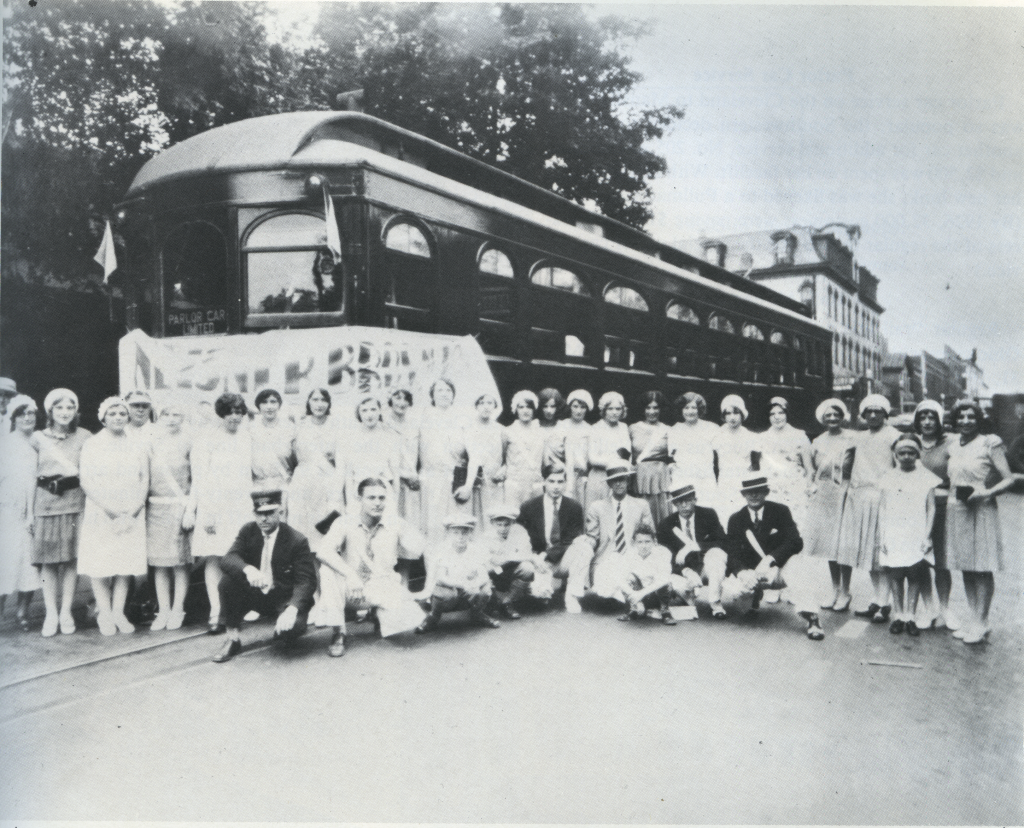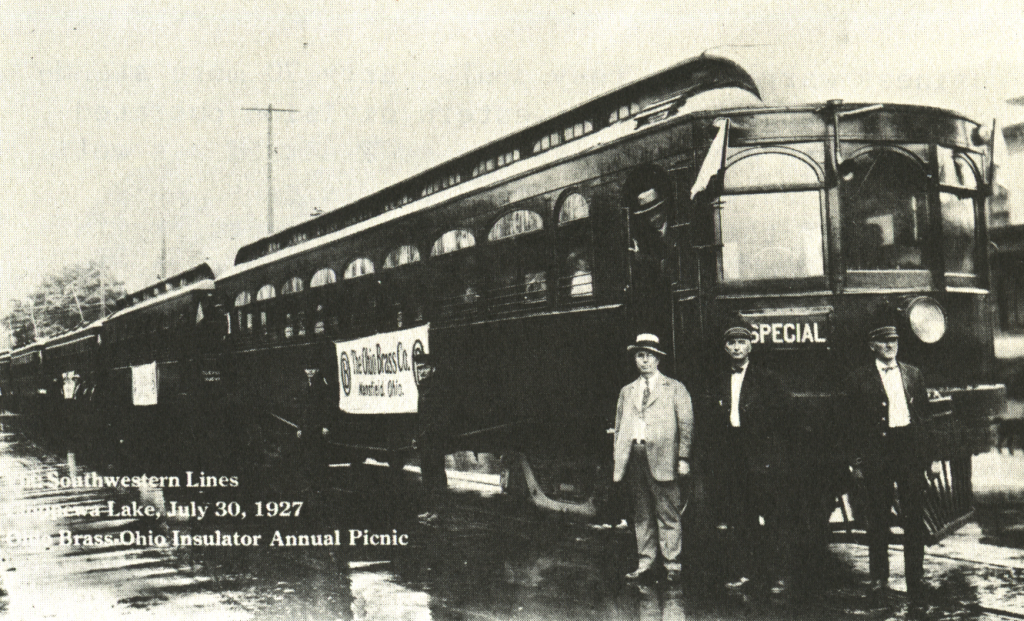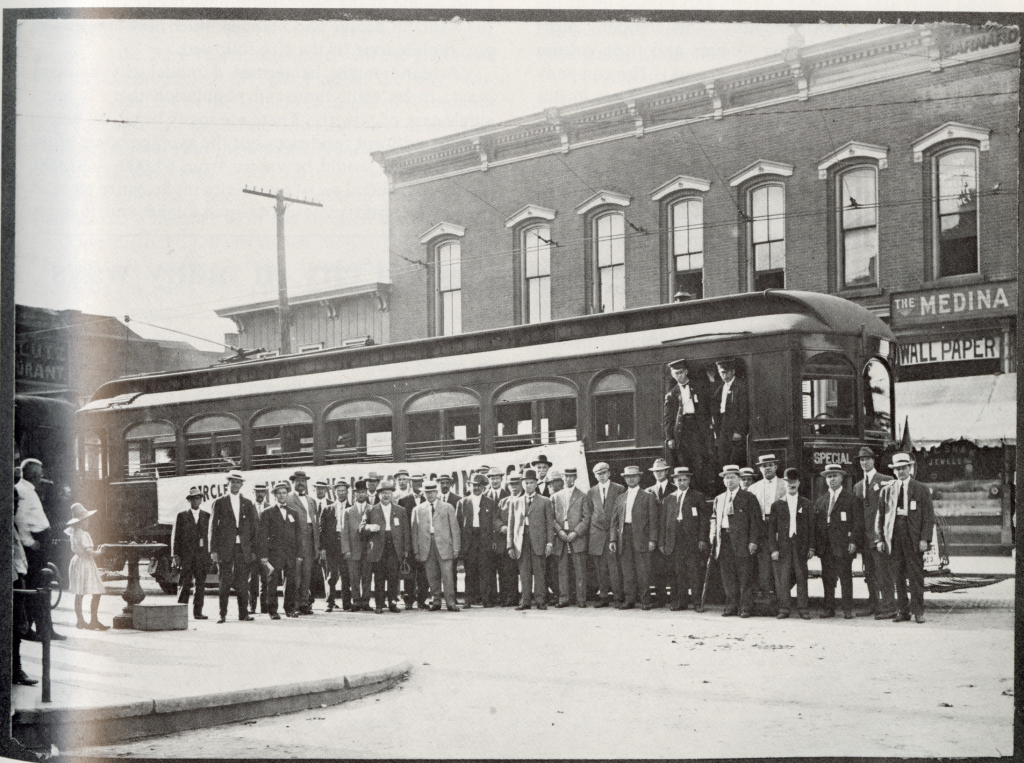As far as is shown in the historical record, the Cleveland, Southwestern, and Columbus would charter cars to just about anyone, assuming they could afford it. Some notable examples come out of Oberlin, where both the college students and townspeople were frequent charterers of the line. For years, the Oberlin Student body would participate in “Migration Day,” in which hundreds of Oberlin students would take the interurban to Case Western Reserve University, where they would both cheer on their own team and heckle Case Western.1 Sport teams, such as the football team2, and various clubs, including the debate team, YWCA3, and glee club4, were reported to have chartered the line for competitions, with the debate club once taking Car #200, “Alvesta”, all the way to Lansing, Michigan, riding the Midwest’s vast and generally interconnected interurban network for over four-hundred miles5. This was possible due to the often shared trackage between companies in major cities.


Business and Baseball
Two particularly special charter trips were the “Great Circle Trip,” put on by the Oberlin Chamber of Commerce, and Trolley League Baseball. The Great Circle Trip was an extravagant tour of the line, focusing on serving the officials of the line as well as prominent businessmen. With the aim of connecting towns economically, it was enormously successful in doing so.6 Early baseball leagues that relied heavily on interurbans were referred to as trolley leagues. There were a number across the country, including others in Ohio. There is little record of the Southwestern’s Trolley League. It briefly existed in the early 1900s, and involved teams from Wooster, Medina, Berea, Lorain, Elyria, Wellington, Oberlin, and Norwalk. The only team name on record is the Wooster Giants.7 During its brief existence, the league would charter streetcar for both the teams and the fans.8

Segregation and Streetcars
Citations
- “All Oberlin Migrates to Cleveland Next Sat.” October 9, 1923. https://cdm15963.contentdm.oclc.org/digital/collection/p15963coll9/id/174188/rec/145.
↩︎ - “Football Team Leaves for the Cornell Game.” October 6, 1911. https://cdm15963.contentdm.oclc.org/digital/collection/p15963coll9/id/170392/rec/231.
↩︎ - “To Study Industrial Conditions of Women’.” March 11, 1927. https://cdm15963.contentdm.oclc.org/digital/collection/p15963coll9/id/175375/rec/209.
↩︎ - Oberlin Review. “A Tale of Cigarettes, Pants, and a Cold, Cold Wind.” November 30, 1910, Vol 38, No. 10 edition. https://cdm15963.contentdm.oclc.org/digital/collection/p15963coll9/id/26661/rec/254.
↩︎ - Wilcox, Max E. The Cleveland, Southwestern, & Columbus Railway Story. Vol. 1. 1 vols. Max E. Wilcox, Northern Ohio Railway Museum, 1951.
↩︎ - Brashares, Jeffrey R., and Mable Dillon. The Southwestern Lines: The Story of the Cleveland, Southwestern & Columbus Railway between Cleveland, Elyria-Oberlin-Norwalk-Wellington-Lorain-Amherst, Berea-Medina-Wooster, Ashland-Mansfield-Crestline, Galion-Bucyrus. S.l.: Ohio Interurban Memories, 1982. ↩︎
- Fort Hays State University, and Mark Eberle. Integrated Baseball in Ohio, 1891–1907: Chavous, Harrison, Fountain, and Follis. Table 3, Page 198. Fort Hays State University, 2023. https://doi.org/10.58809/NLBE2842. ↩︎
- Ibid. ↩︎